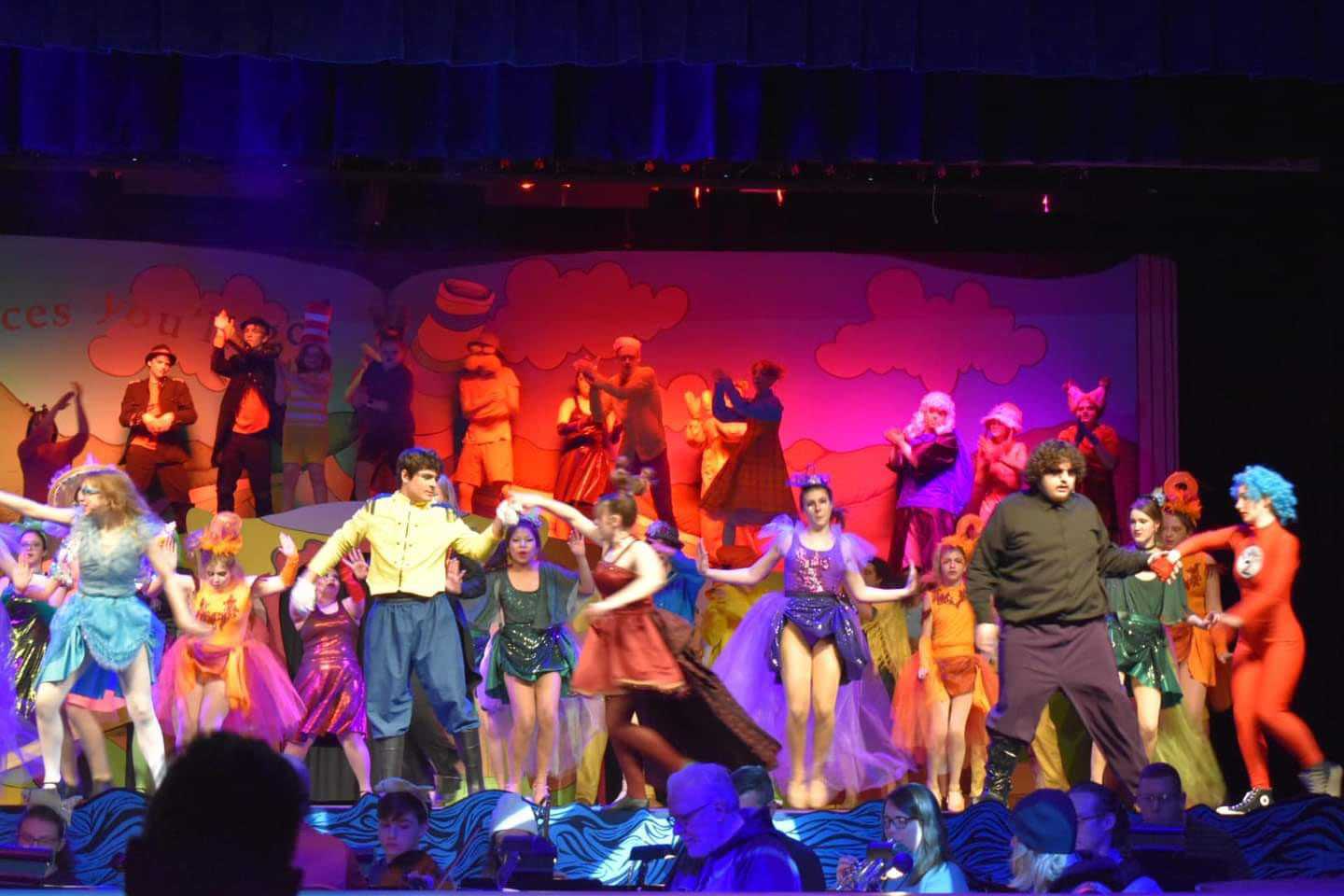Chauvet creates the colours for Seussical
- Details

Lighting such colourful characters is fun! Ask Christopher Robin, who used layered effects and a variety of light angles to bring them and their imaginative costumes to life at a recent West Hempfield High School production of the play.
“This was just a really enjoyable experience,” said Robin. “The costumes were magnificent, and the set was beautifully painted. Within the set itself, the whole spectrum of colour was used. The giant story book on stage gave me free reign to use any colour to capture the palette on the pages of Dr. Seuss’s many children books.”
Helping Robin create this colour-scape was a collection of Chauvet Professional fixtures that included 10 COLORado 72 Battens and four Maverick Storm 1 Wash units.
Robin originally wanted to place his RGBWA strip lights near the Cyc, but limited pipes and positions for rear projections, which created by Jesse Madden, made it necessary for him to locate the fixtures on a pipe about five-feet downstage from the Cyc.
“This wasn’t ideal, and I was nervous of how they were going to play, but I was pleasantly surprised,” said Robbins. “I actually was able to use the COLORados as face lights and lighting the Cyc, which was actually Dr. Seuss’s Story Book painted upstage. The behaviour and smooth gradience of the fixtures gave me many awesome looks playing off the painted set. They were a very important layer in this design and that really helped everything downstage pop that much more.”
The Maverick Storm 1 Washes in the rig were placed in tormentor positions that were parallel with the passerelle. Robin relied on them to work with the rig’s projectors to light the mid-stage scrim.
Although Robin unfurled a rainbow during this happy show, he was also careful to control his use of colours so they could be better appreciated. “Layering is everything when you want to use multiple colours at the same time,” he said. “A muddy mess of colour never looks good when they are all touching the same surfaces. Balancing back light, side light, and face light starts with positions, and separating my zones from upstage to downstage is how I can get the contrast I need between the colours. This allowed me to create visually pleasing two and three tone looks.”
















